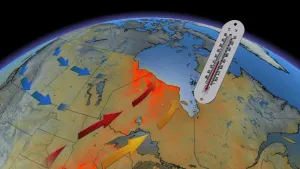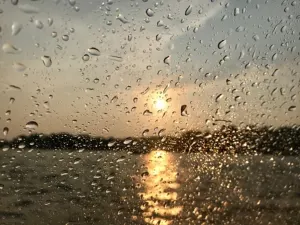
3 facts about the smelly problem invading Mexico's beaches
A smelly, slimy problem has government officials in Mexico expecting a 30 per cent drop in tourism at some of the Caribbean's most beautiful beaches.
Thick rafts of a seaweed-like algae species known as sargassum have caused resorts to close in the Caribbean before, and now they're piling up on Mexico's Riviera Maya in foul-smelling heaps.
Cancún, Playa del Carmen, Puerto Morelos, Tulum, Cozumel and Isla Mujeres are all located along the coast facing more than a million tonnes of sargassum, according to Mexico News Daily.
"This is serious. A lot of sargassum has already arrived ... People who arrive say: ‘I’m not going to the beach, I’m better off going to another place’ and they leave,” a tourism official for the region told the agency.
SEE ALSO: Manatee deaths in Mexico leave experts puzzled
Sargassum, as the name might suggest, has always been present in large quantities in the Atlantic Ocean; it's how the Sargasso Sea off the east coast of the United States got its name. But in the past few years, the open-ocean dwelling plant hasn't been satisfied to stay offshore, launching massive invasions on beaches of the Caribbean and South Florida. And while it's not dangerous to people, per se, it poses some major problems.
1. It obstructs beach use, and smells terrible
Sargassum itself is not toxic, but once it washes ashore and begins to decay, it releases a strong, unpleasant odour, similar to rotten eggs. Truckloads of the stuff clogging beaches in Barbados, Guadaloupe, and Tobago forced officials to issue advisories to residents, while a major hotel in Antigua, The St. James Club, has had to close its doors until October 1. And it can be more than just a nuisance to beachgoers. According to experts at the University of Miami, decaying mats tend to play host to biting insects like sea lice, while floating mats can trap floating debris.
2. It's bad for some sea life While we land-dwellers can avoid the stuff, sea life isn't as lucky. Sargassum can grow as high as 2 feet, and traps crabs, sea turtles, as well as blocking sunlight from reaching the local seagrasses and corals that live on the ocean floor beneath it. In fact, it's a double-whammy for local sea life, as the organisms that work to decompose the sargassum also use up oxygen and nutrients in the water the locals need.
When it's in its proper place, there are some sea creatures who rely on sargassum for food and shelter, including various kinds of fish. Sea turtles have a somewhat complicated relationship with the plant; on the one hand, small turtles make use of it for shelter and transportation. On the other, beached sargassum clogging turtle nesting beaches grounds can prevent nesting.
3. No one knows why it's spreading The first major bloom, or beaching event, in the Caribbean, Gulf of Mexico and Florida, happened in 2011, and since then two other large-scale events have happened; one in 2014-2015, and one now. Before that, there had never been a widespread event reported. Satellite data from before 2011 seems to confirm this - an oceanographer from the University of South Florida, Chuanmin Hu, told Science that the region is actually "largely free of seaweed" in images from prior to 2011.
SEE ALSO: Climate change has the 'deep blue sea' is changing colour
According to researchers at the University of Miami, it seems like this inundation represents a 'move' in the seaweed, rather than new growth. Some research suggests that the unusual beachings may be the result of anomalous winds over the Atlantic, pushing both the waters of the Sargasso Sea, and its mats of seaweed, in 'unusual ways'. Another study suggests that, at least in the case of the 2011 event, the seaweed came to the Caribbean from the tropical Atlantic, east of Brazil.
Lew Gramer, a scientist at the University of Miami, suggests that climate change may have played a role, as the initial 2011 event was preceded by unusual pressure patterns in the North Atlantic. "No such persistent low in the NAO has occurred since early 2010," says Gramer. "However, now that the table has been set for Sargassum in the western equatorial Atlantic by the 2009-2010 NAO low, the ocean and wind conditions which bring Sargassum en masse from the equatorial Atlantic through the eastern Caribbean, Yucatan Strait, and into the Straits of Florida may continue to occur."
Sources: Mexico News Daily | St. Lucia News | University of Miami | Science | University of South Florida | Barbados Government Information Service |









